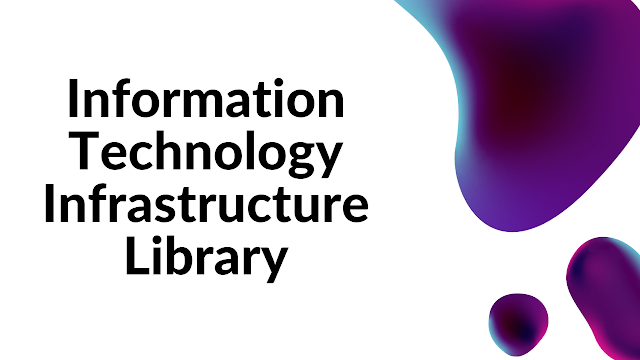Information Technology Infrastructure Library
The Information Technology Infrastructure Library (ITIL) is a set of best practices for managing IT services. It was developed by the UK government's Central Computer and Telecommunications Agency (CCTA) in the 1980s and has since been adopted by organizations around the world. ITIL provides a framework for planning, delivering, and supporting IT services, and it covers the full lifecycle of IT services, from concept to retirement.
ITIL is divided into five core books, each of which covers a different aspect of IT service management:
- Service Strategy: This book covers the strategic aspects of IT service management, including how to align IT services with the needs of the business.
- Service Design: This book covers the design and development of new IT services and the improvement of existing ones.
- Service Transition: This book covers the planning and execution of changes to IT services, including testing and validation, release and deployment, and knowledge management.
- Service Operation: This book covers the day-to-day management of IT services, including incident management, problem management, and access management.
- Continual Service Improvement: This book covers the ongoing improvement of IT services, including measurement and reporting, and the use of best practices and frameworks such as ITIL to drive improvement.
ITIL is widely recognized as the most widely accepted approach to IT service management in the world. Many organizations adopt ITIL to improve the quality and efficiency of their IT services, and to align them more closely with the needs of the business. Additionally, ITIL also provides a comprehensive and integrated approach to IT service management, which means that it can be used to manage a wide range of IT services, from traditional IT services such as data center operations and network management to newer forms of IT services such as cloud computing and IT as a service.
There are also ITIL certifications available for individuals and organizations to show their understanding and implementation of ITIL.
One of the key benefits of ITIL is that it provides a common language and framework for IT service management, which can help to improve communication and collaboration within an organization. It also promotes a proactive and preventive approach to IT service management, rather than a reactive one. This can help to reduce downtime and improve the overall availability of IT services.
ITIL also provides a structured approach to incident management, which can help organizations quickly and effectively resolve incidents and restore normal service operations. This includes a standardized process for logging, categorizing, and prioritizing incidents, as well as clear roles and responsibilities for incident management.
Another important aspect of ITIL is its focus on continual service improvement. ITIL encourages organizations to regularly review their IT service management processes and identify areas for improvement. This can be done through a process of measurement and reporting, which can help organizations to track their performance and identify areas for improvement.
While ITIL is widely recognized as an effective framework for IT service management, it is important to note that it is not a one-size-fits-all solution. Organizations should tailor their implementation of ITIL to meet their specific needs and goals. Additionally, ITIL should be used in conjunction with other best practices and frameworks, such as the Project Management Body of Knowledge (PMBOK) and the Control Objectives for Information and related Technology (COBIT), to ensure a comprehensive approach to IT service management.
In conclusion, ITIL (Information Technology Infrastructure Library) is a set of best practices for managing IT services that provide a framework for planning, delivering, and supporting IT services. It is widely adopted by organizations globally and recognized as the most accepted approach to IT service management. ITIL also provides a structured approach to incident management, continual service improvement, and clear roles and responsibilities. It can be tailored to meet organization-specific needs and it is recommended that it should be used in conjunction with other best practices and frameworks.
FAQs
What is ITIL?
ITIL stands for Information Technology Infrastructure Library. It is a set of best practices for managing IT services, developed by the UK government's Central Computer and Telecommunications Agency (CCTA) in the 1980s. It provides a framework for planning, delivering, and supporting IT services, and it covers the full lifecycle of IT services, from concept to retirement.
What are the five core books of ITIL?
The five core books of ITIL are Service Strategy, Service Design, Service Transition, Service Operation, and Continual Service Improvement. Each book covers a different aspect of IT service management, from strategic planning to day-to-day management and ongoing improvement.
Why do organizations adopt ITIL?
Organizations adopt ITIL to improve the quality and efficiency of their IT services, and to align them more closely with the needs of the business. ITIL provides a common language and framework for IT service management, which can help to improve communication and collaboration within an organization. It also promotes a proactive and preventive approach to IT service management, rather than a reactive one.
Are there certifications available for ITIL?
Yes, there are ITIL certifications available for individuals and organizations to show their understanding and implementation of ITIL. These certifications are offered by Axelos, the organization that owns the rights to ITIL.
How should ITIL be implemented in an organization?
ITIL should be tailored to meet the specific needs and goals of an organization. It should be used in conjunction with other best practices and frameworks, such as the Project Management Body of Knowledge (PMBOK) and the Control Objectives for Information and related Technology (COBIT), to ensure a comprehensive approach to IT service management. Additionally, ITIL should be regularly reviewed and updated to ensure its continued relevance and effectiveness.
Tags:
Articles

